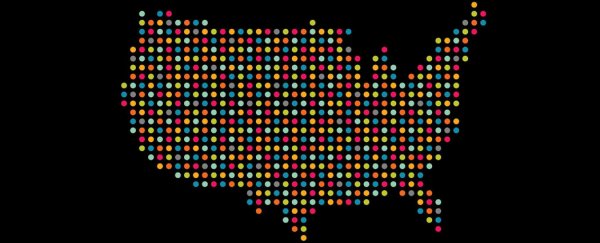The latest snapshot of the state of Internet adoption in the US shows a nation that mostly can't get enough of the web, although a number of key differentiators still provide barriers to many Americans getting online.
Data provided by the Pew Research Centre reveals that 84 percent of adult Americans aged 18 or older use the Internet in 2015 - the exact same figure as the last two years, highlighting how internet penetration has levelled off in recent times with so many of us having already adopted the technology. (Even 2012 showed 83 percent.)
But compared to 15 years ago when the Pew Research Centre started measuring Internet adoption, access to the web has come a long way. In 2000 just over half of adult Americans (52 percent) used the internet, so today's 84 percent represents a significant gain in penetration, even if the momentum has slowed to a virtual standstill in the last few years.
So what factors are preventing that last 16 percent from getting online?
The most significant factor pulling down overall Internet adoption is age. While young Americans are on the web in extremely high numbers (the 18-29 group is at 94 percent, and 30 to 49-year-olds are not far behind at 92 percent), the 50-64 segment falls down to 81 percent and people 65 or older are only at 58 percent.
Class differences also account for part of the gap. People with a university degree enjoy extremely high access to the web (95 percent) but only two out of three people without high school qualifications are online. Fortunately, this group is also one of the fastest-growing segments, likely thanks to the ongoing boom in relatively inexpensive mobile technology.
Similarly, richer households with an income over US$75,000 are extremely likely to be online (95 percent, the same as households earning more than US$50,000), while poorer families pulling in less than US$30,000 don't have equal access to the Internet at 74 percent.
In terms of racial and cultural backgrounds, English-speaking Asian Americans enjoy the best access to the Internet (97 percent), while black and non-Hispanic people share the least at 78 percent, although this has grown significantly from just 38 percent 15 years ago.
Finally, community type is also a key factor affecting Internet uptake, with urban and suburban residents (85 percent each) having better access to the Internet than people living in rural areas (78 percent).
As for gender, historically the two sexes have enjoyed very little difference in terms of access to the web over the past 15 years of Pew's surveys and it's never been closer than today, with 85 percent of men and 84 percent of women identifying as Internet users.
Check out the raw data and see where you fit in at the Pew Research Centre.
